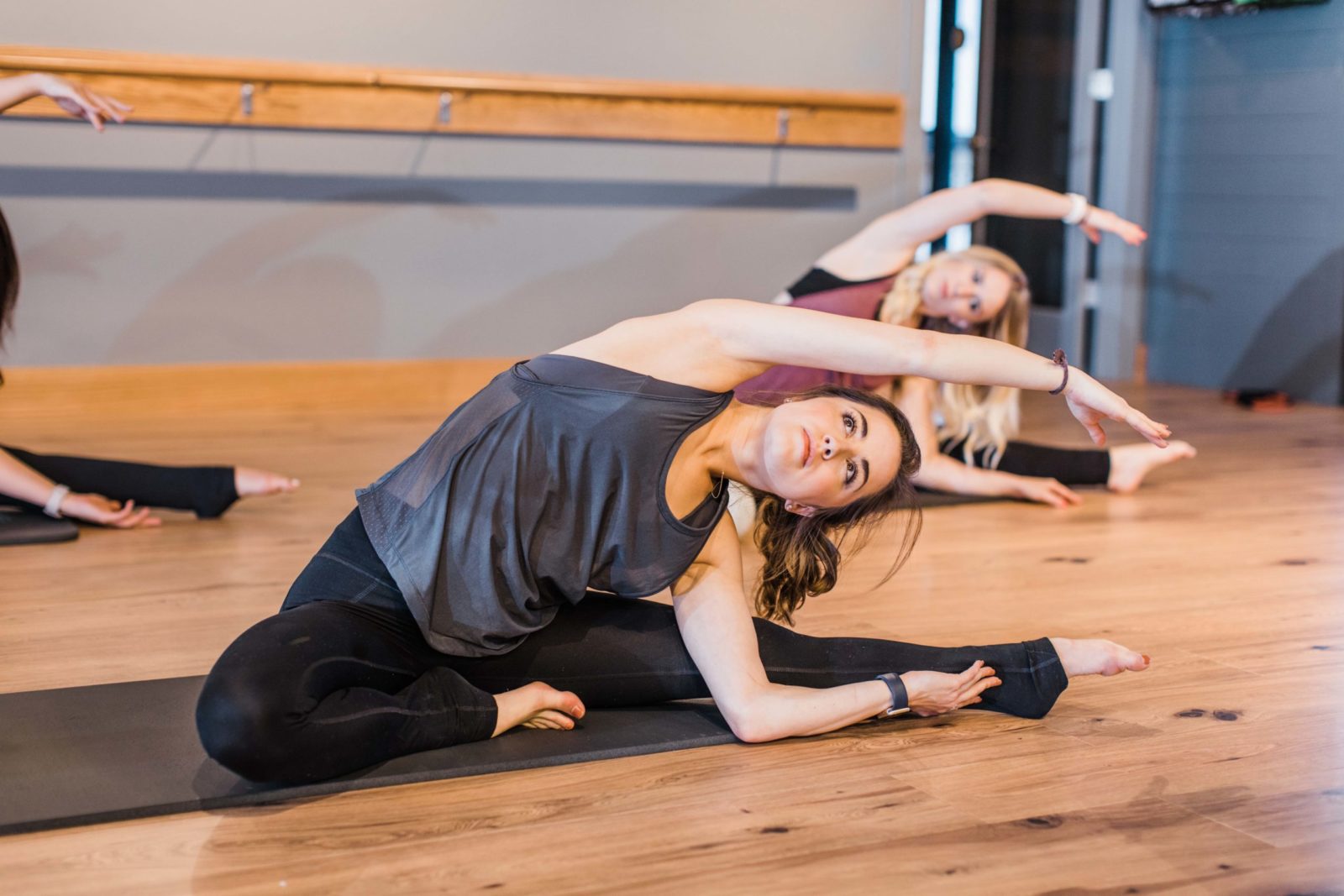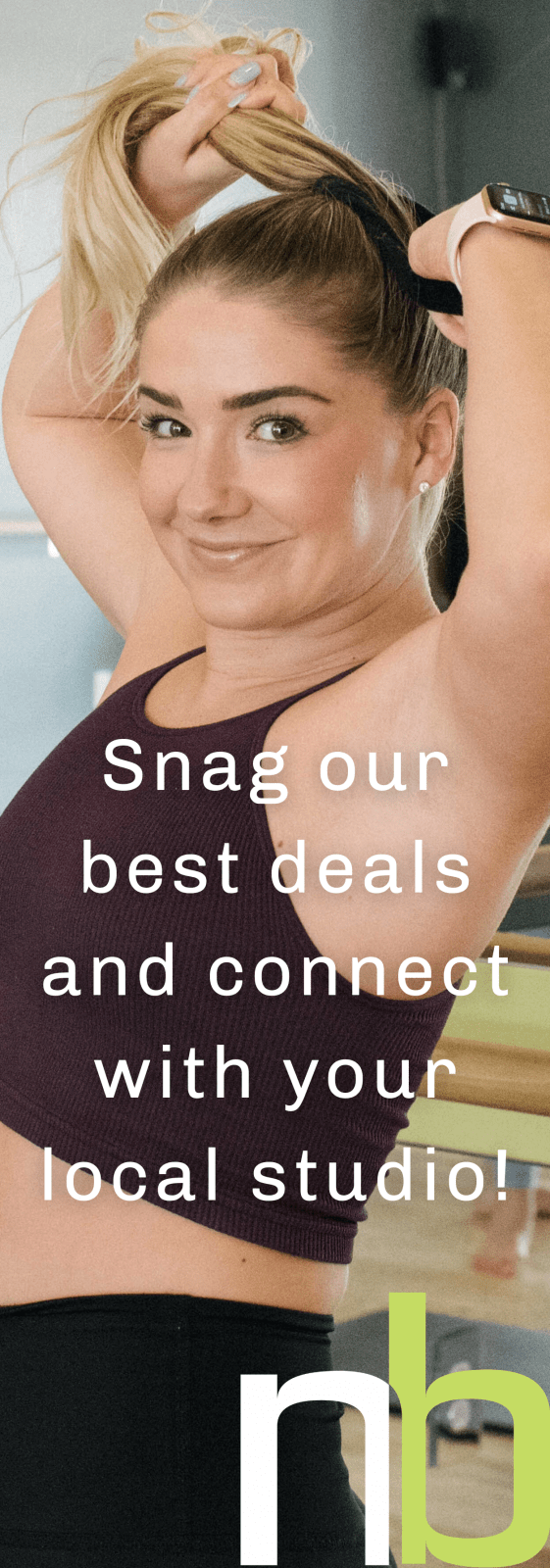Why All Runners Should Practice Barre
One of our favorite ways we hear of clients incorporating barre into their lifestyle is through cross-training. Cross-training is when you train in more than one sport, or workout, to improve performance in your main sport. Some of the most popular athletes we see in our studios that cross-train are runners.
If you love to run, it’s a great idea to include variety in your workouts so that you exercise parts of your body you normally don’t use. When you consider that running is a high-impact activity which puts a lot of wear and tear on joints and muscles, runners make a smart move when they incorporate low-impact exercise to reduce their chance of injury, improve endurance, gain strength, and run faster. And what runner doesn’t want to improve their personal best!? Here’s the top 5 reasons why barre is a must for your running routine.
- You’ll get a full-body workout. During your barre class, you’ll focus on exercising easy-to-forget small muscles, as well as larger, functional muscle groups. Small muscles help protect your hips and knees from injury during your run, and barre is the number one exercise when it comes to isometric exercises. We work out the entire body, including your ankles and feet! Weak feet and ankles will cause you to put stress on other areas of your body, which could lead to back pain and muscle tightness. You’ll quickly find yourself using these often overlooked muscles at the barre. With a barre workout, you’ll also strengthen your core tenfold. After all, our classes are honestly a 55-minute abs workout. And a strong core is essential to powering your run and helping you keep balance while running. Your core strength predicts how well you maintain balance and control over your stability. For a runner, balance and stability are what prevent you from falling every time your foot hits the pavement. The stronger your core, the less energy your body expends on maintaining balance. This means you create more energy for your run, like a shorter minute per mile or longer distance, score!
- It’s low-impact.
 Running is one of the most high-impact sports there is, which means it puts a lot of wear on your joints. As a runner, it’s important to give your body recovery time, while also balancing out your workout routine. Because barre focuses on small, isometric movements while keeping the rest of the body still, it’s a nice change from pounding the pavement for your joints. Barre helps you build strength, endurance and blast calories without the extra wear and tear. And don’t misinterpret ‘low impact’ as easy. You’ll still feel the burn, break a sweat, and your entire body will benefit through a barre workout.
Running is one of the most high-impact sports there is, which means it puts a lot of wear on your joints. As a runner, it’s important to give your body recovery time, while also balancing out your workout routine. Because barre focuses on small, isometric movements while keeping the rest of the body still, it’s a nice change from pounding the pavement for your joints. Barre helps you build strength, endurance and blast calories without the extra wear and tear. And don’t misinterpret ‘low impact’ as easy. You’ll still feel the burn, break a sweat, and your entire body will benefit through a barre workout. - You’ll improve your flexibility. Running moves in one primary plane of motion. You infrequently do lateral or twisting movements, and typically have limited joint range of motion/flexibility. Your body is constantly challenged through various poses, new postures, and moving in multiple planes of motion in a barre class. Your body is also really put through the ringer during a run. It’s in fight or flight mode and your muscles are tense and tight, being constantly contracted during your run. So as a runner, it’s important to stretch and strengthen your running muscles like quadriceps and hamstrings on days you do not run. And a barre workout on your “off days” is the perfect opportunity to improve your flexibility. Barre class also incorporates timed stretches throughout class to lengthen and strengthen your muscles. Stretching reduces stress in the muscles, reduces the risk of injury due to increased muscle pliability, and can therefore improve the overall performance of your run.
- You’ll open your hips. Running makes hip flexor muscles tight. Tight hips make it harder to run and can lead to overuse-related injuries like knee pain or IT band syndrome. Hip-opening exercises are a big part of a barre routine and will help loosen tight hip muscles, prevent injury, and even improve posture. Exercises like squats, lunges, hip bridges, and side leg lifts are foundational barre positions and are key to opening the hips. As well as hip openers, you’ll also spend time strengthening those pesky little inner thigh muscles. Barre workouts are intensely focused on improving core strength, developing the stabilizing muscles of the hip girdles, and enhancing flexibility.
- You’ll reduce your risk of injury.
 Shin splints, Plantar fasciitis, Runner’s knee – chances are as a runner, you’ve suffered from at least one of these injuries. The University of South Florida estimates that around 65 percent of all runners will be injured at any time. For every 100 hours of running, the average runner will suffer one injury. Barre workouts improve muscle strength, flexibility and balance which all greatly reduce injury risk. As a runner, you use the same joints and muscles repetitively. This can lead to tight muscles and muscle weakness, which might result in injury. A barre workout strengthens muscles all over the body so stress is more evenly distributed and well-worked muscles aren’t left to overcompensate for weaker ones. It’s also a good idea to take breaks from high-impact sports like running to prevent injury. Barre helps your body recover while still providing the workout you need and crave.
Shin splints, Plantar fasciitis, Runner’s knee – chances are as a runner, you’ve suffered from at least one of these injuries. The University of South Florida estimates that around 65 percent of all runners will be injured at any time. For every 100 hours of running, the average runner will suffer one injury. Barre workouts improve muscle strength, flexibility and balance which all greatly reduce injury risk. As a runner, you use the same joints and muscles repetitively. This can lead to tight muscles and muscle weakness, which might result in injury. A barre workout strengthens muscles all over the body so stress is more evenly distributed and well-worked muscles aren’t left to overcompensate for weaker ones. It’s also a good idea to take breaks from high-impact sports like running to prevent injury. Barre helps your body recover while still providing the workout you need and crave.
Barre is the perfect way to tone muscles for a strong but lean physique, and to complement your running, or other high-impact exercise, routine. You’ll have better flexibility, more endurance, and greater running performances as a result of barre classes. Plus, a barre workout relieves stress with low-impact reps that work. We find those that cross-train aim to complement their running routine with 1-2 barre classes weekly. Whether you’re looking to cross-train, rehab an injury, or simply improve your physical and mental strength, we have a barre class that’s perfect for you! Ask your local studio for a cross-training class package that will complement your running routine.


